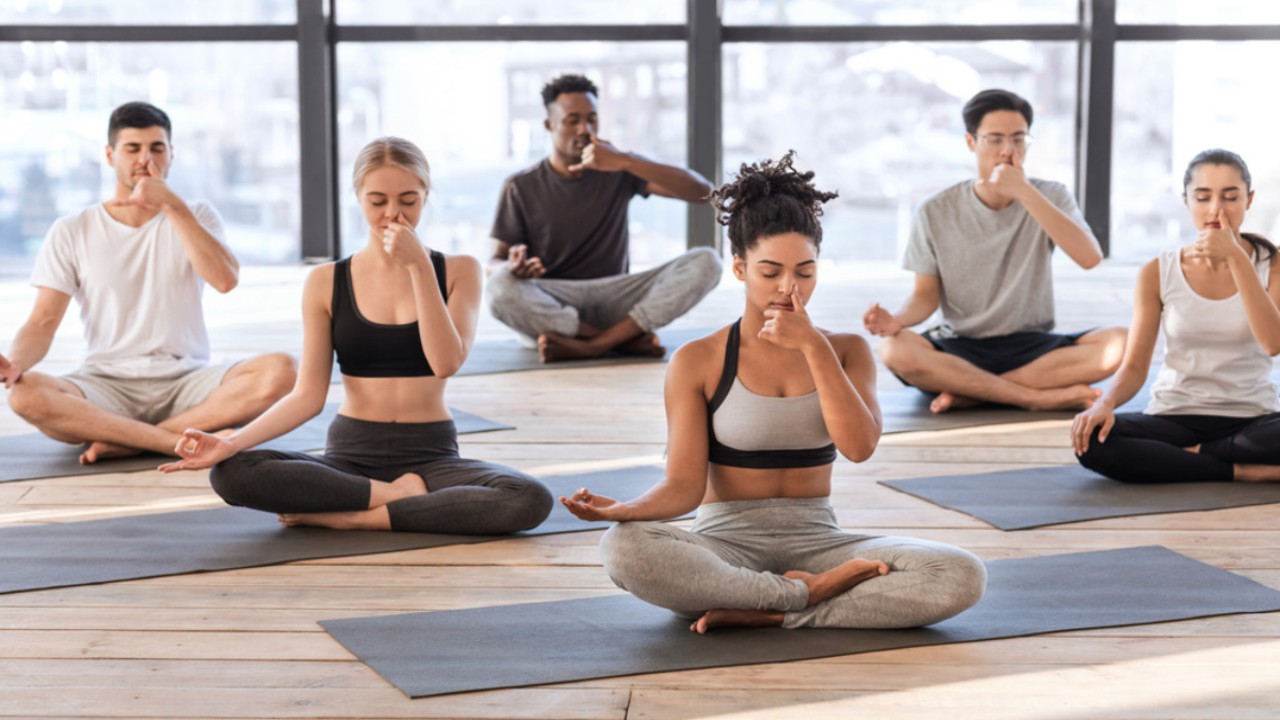Sinusitis can interrupt your breathing experience. Dealing with this situation on a daily basis can be very unpleasant and uncomfortable. However, by practicing sinusitis yoga, you can relieve nasal congestion and get rid of worsening congestion naturally. Sinusitis may last from 4 weeks to 12 weeks, sometimes longer, and limits the frequency of effective breathing (1). Yoga asanas provide complete physical and mental flexibility and enhance muscle movement and blood circulation in the nose. This, in turn, may unclog your nose, provide a way for mucus to drain, and make your breathing easier without making it difficult for you to inhale or exhale.
Sinusitis can also lead to bacterial growth that may develop into a respiratory infection (1). When you have sinusitis, your nasal passages may also become inflamed, which is one of the leading causes of nasal allergies, headaches, sore throats, and severe breathing obstructions (2). However, yoga, as a mind-body exercise, allows flexibility in choosing the best yoga postures that suit your health and physical requirements (3). Therefore, yoga for sinus infections can be very effective in relaxing the nasal passages and relaxing nasal congestion. Let us discuss in detail the yoga asanas for sinusitis so that you can breathe easily and effortlessly.
Sinusitis Yoga for Breathing Ease
Yoga poses have been proven to have quite a soothing effect on sinus congestion. Some of the most effective yoga poses are:
1. Bhramari Pranayama (Buzzing Breath)
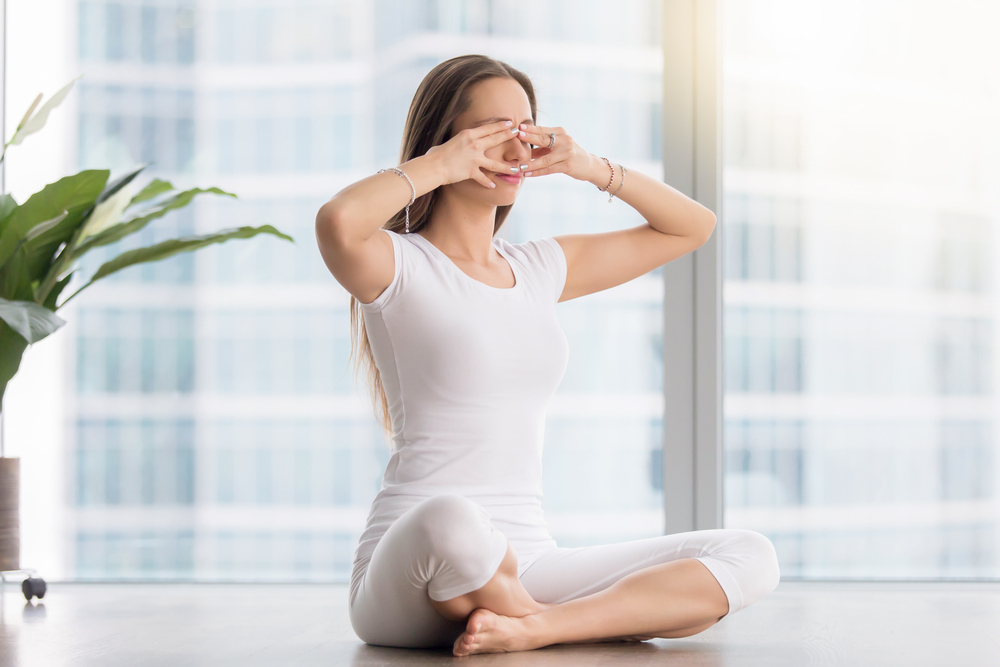
Sinusitis can cause nasal congestion and mucus formation, which can lead to breathing difficulties and serious infections (4). However, yoga poses like Bhramari pranayama are one of the most effective practices that create natural vibrations as you hum, which expel mucus and help provide clean air passages to Ensure proper ventilation and air flow within the nose.4). So if your nose feels clogged and stiff, practicing pranayama at least twice a day may help unclog your nose and release sinus pressure.
Steps to follow:
- In this pose, place your thumbs over your ears, closing them.
- Place your index finger on your forehead.
- Place 3 other fingers where they touch your nose and the bottom of your eyes.
- Take a deep breath and hold it for a while.
- Exhale one forceful breath through the nostrils while continuing to hum.
- Make sure your abdomen is relaxed and still.
- You can repeat this pranayama for 15-20 times.
- To get the most out of this form of yoga, make sure you breathe in and out through your lungs.
2. Jal Neti (Water Purification)
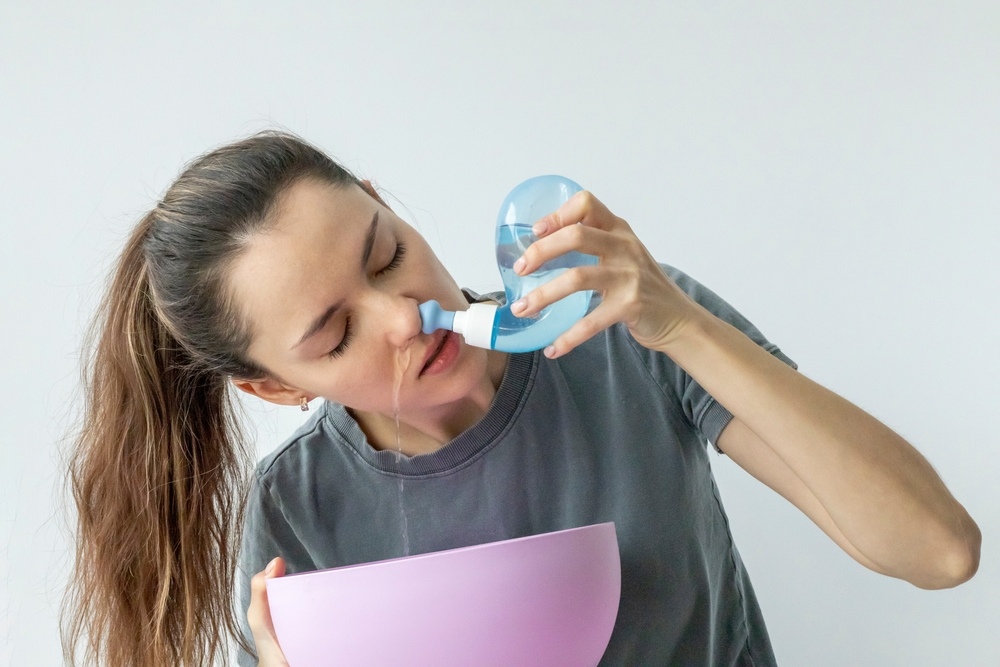
Yoga exercises like Jal Neti have proven to be a simple and convenient way to clear nasal congestion and reduce breathing difficulties (4). An important part of hatha yoga, this practice can reduce the symptoms of colds, snoring, and rhinitis, and provide relief in the treatment of sinusitis and asthma.5). This technology can also help prevent respiratory illnesses that can affect lung health and cause the flu (6). Therefore, this yoga practice may be very effective in relieving sinusitis and helping you breathe freely.
Steps to follow:
- Get some warm salted water in a pot. Make sure it has an opening for easy water flow.
- Tilt your head to one side and make sure you can clear your nostrils with water.
- Breathe deeply through your mouth. Avoid breathing through your nostrils.
- Place the spout or open bottle under your nostrils.
- Gently create direct contact between the opening and nostrils, allowing water to flow directly into the nostrils.
- Maintain this heading position, allowing water to pass through one nostril and out the other.
- You can repeat the same procedure for both nostrils 5-10 times to ensure your nose is clean.
notes: This yoga practice can be very challenging and should be done under the supervision of a yoga practitioner.
3. Kapalbhati Pranayama (Shining Skull Pranayama)
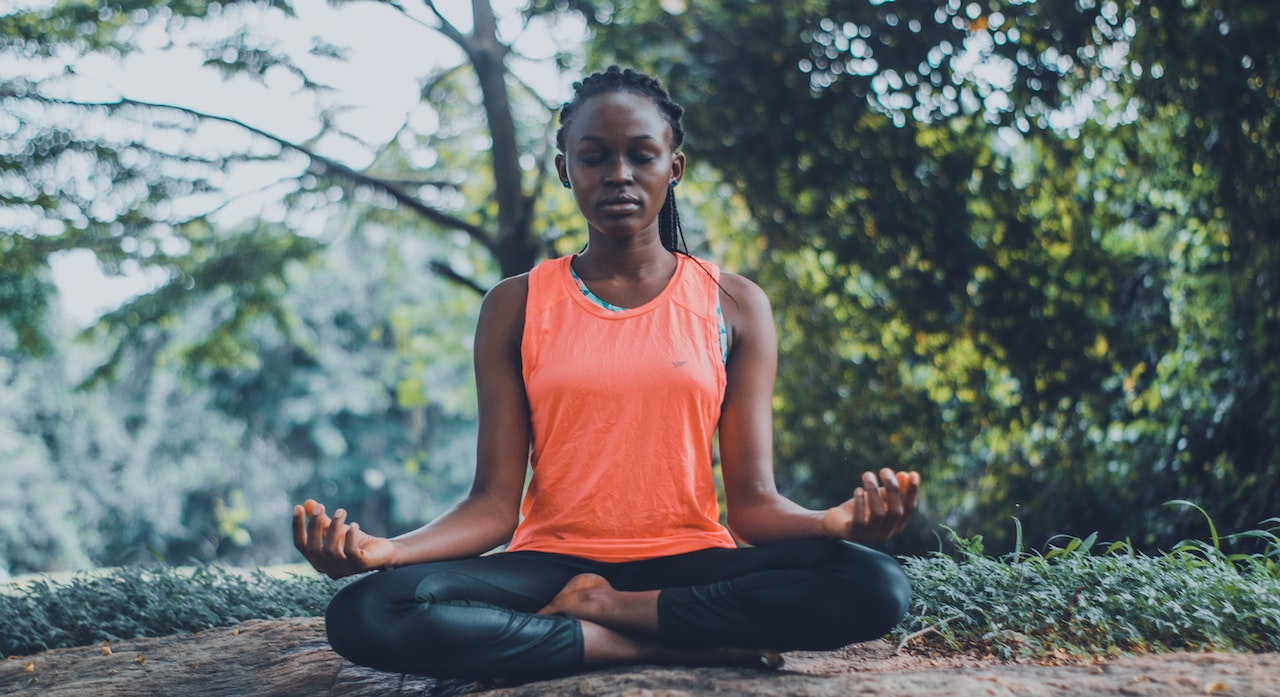
Oxygen saturation is essential to maintain oxygen supply to different internal organs such as the kidneys, brain, and heart, as insufficient oxygen saturation may lead to hypoxia.7). Kapalbhati pranayama enhances oxygen saturation and helps in the efficient functioning of the diaphragm – thereby making breathing easier and reducing the occurrence of congestion (8). This yoga practice helps improve cardiovascular and physical health by increasing blood flow, resulting in smoother exhalations and easier heartbeats (9). So, with this Shining Skull Pranayama, you ensure that your breathing does not feel suffocated and that your internal organs get an abundant supply of oxygen to function properly. As an added bonus, this yoga practice can make your forehead look naturally glowing (10).
Steps to follow:
- Sit in a comfortable position on a solid floor or yoga mat.
- Keep your spine straight and your palms on your knees.
- Sit in this meditative pose and take a deep breath.
- Pull your stomach inward and exhale gently.
- You can place your hand on your stomach and feel it contract and relax.
- Do this 18-20 times, relax after 10-15 breaths, and then start again.
4. Matsya Asana (Fish Pose)
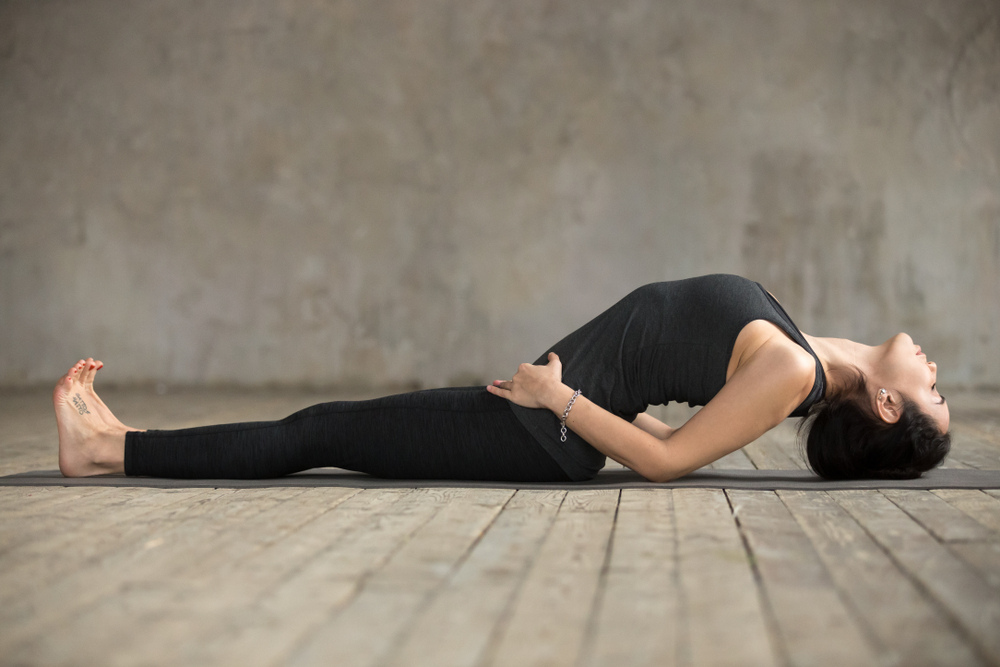
Shatkarma, the cleansing of internal organs, helps in nasal purification and improves respiratory efficiency (9). Cleansing the internal organs, also known as Shatkarma or Dhauti, not only helps your nose feel relaxed but also helps reduce digestive problems like constipation, gastritis and other pancreatic disorders.eleven). So, with this fish yoga pose, you can provide soothing detoxification and refining effects to your body naturally.
Steps to follow:
- Place a soft mat on the floor or make sure the floor is comfortable to lie on.
- Lie on your back correctly.
- Make sure your feet are together and your toes are pointing up.
- Place your hands on the lower back, near your hips. Make sure your palms are facing down to avoid injuring your hands.
- Shift your weight to your elbows and lift your chest up.
- When your chest is lifted correctly, bring your head close to the floor.
- Avoid putting any pressure on your head or chest while performing this exercise.
- Breathe gently while maintaining this arch position.
- You can stay in this position for 2-3 minutes.
- Lift your head, then your chest, and relax gently.
- Relax for a while and repeat this exercise 5-10 times.
5. Neti Sutra (Thread Cleaning)

Sutra Neti involves Ujjayi breathing exercises that help get rid of runny nose, colds and reduce headache symptoms (9). It has also been shown to keep sinuses healthy and clean (12). So even if you are not dealing with any sinus problems, you can do this yoga practice every day to protect your sinuses from serious infections and allergies. However, if you are new to this practice, you should practice it with a yoga practitioner or yoga expert.
Steps to follow:
- Get an appropriate length of surgical or soft, clean thread.
- Put one end of it in your hand and slowly insert it into one of our nostrils.
- Continue to push it gently into your nose until you feel it reach your throat.
- Open your mouth correctly.
- Try pulling the other end of the thread through your mouth, keeping your hand movements gentle.
- Do not pull the cord with force. Practice this yoga slowly.
- During this process, continue to hold one end of the thread with one hand while pulling it out with the other hand.
- After holding the other end of the cord in your hand, try moving it back and forth to properly clean your nasal passages and throat.
- Do this for about 5 minutes.
- Clean the wire before using it in the other nostril.
- Repeat 5-10 times, depending on your tolerance level.
Note: If you are new to this exercise, you should do it under the supervision of a yoga expert.
6. Ujjayi Pranayama (Ocean Breathing)
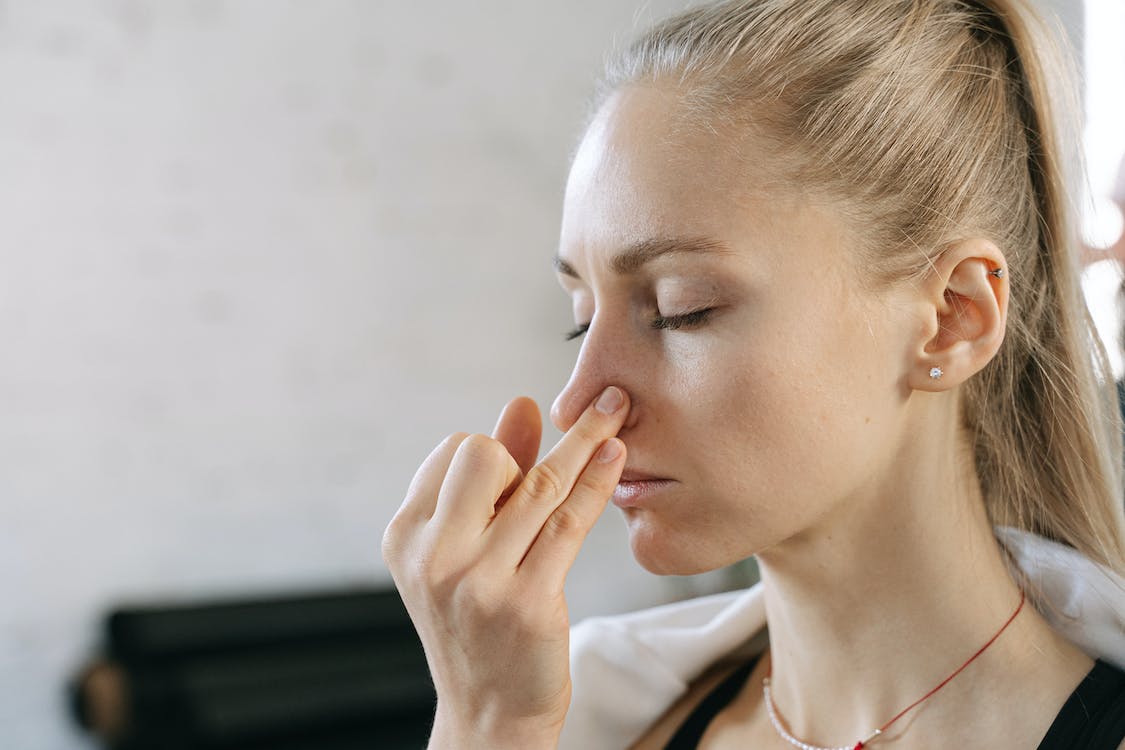
Breathing through your nose helps filter the air and protects you from inhaling environmental pollutants including bacteria and dust, which can prevent nasal irritation and infection (13). Ujjayi Pranayama, also known as Victory Breath Pranayama, helps improve the efficiency of nose breathing and clears the throat (14). So, through ujjayi pranayama, you may as well get rid of bacterial infections.
Steps to follow:
- Gently close your eyes and lips without putting any pressure on them.
- Shift your attention to breathing through your nose.
- Try to contract your throat muscles while ensuring your lips seal.
- Breathe deeply through your nostrils.
- Repeat this nasal breathing technique at least 10-12 times.
Significant benefits of yoga for sinusitis
1. May help prevent glaucoma
Glaucoma has been considered the leading cause of blindness (fifteen). In addition to the risk of many serious eye problems, it can also lead to permanent blindness or loss of vision (16). Eyes can also be affected by sinusitis and by doing this, you can protect your eyes from this deadly disease.
2. May lower blood pressure
High blood pressure may increase the risk of cardiovascular disease (number 17). Yoga practice may help lower heart rate, diastolic and systolic blood pressure (18). So yoga poses may help keep your heart healthy while you’re dealing with nagging sinus problems.
3. Can increase muscle flexibility
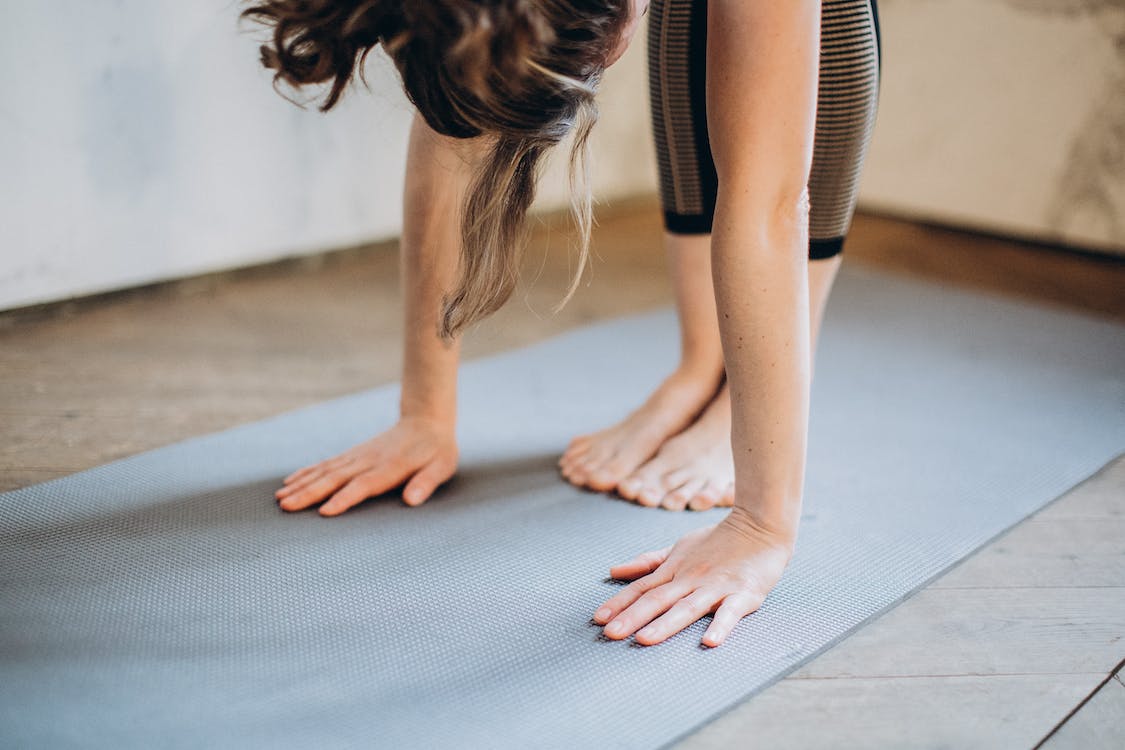
In addition to leading to complex nasal conditions that require surgery, nasal congestion can also lead to scarring or scabbing within the nose.19). It is also associated with severe itching and allergies (twenty). As the nasal muscles become more flexible, there is uninterrupted movement within the nasal cavity to expel mucus and other residues (18). Yoga poses can also improve tissue function and relieve nasal congestion (21).
4. Can enhance lung function
Improper lung function can weaken respiratory muscles and worsen your respiratory system (twenty two). Sinusitis exercises help strengthen lung function, thereby enhancing exhalation through the lungs (18). Therefore, by controlling your sinuses, you can ensure that your body expels waste gases efficiently.
5. May help improve sleep cycles
Sinuses can disrupt sleep patterns and thus disrupt sleep cycles (twenty). Yoga has been shown to calm people and relieve anxiety, and can be very effective in treating sleep disorders (18). So, by incorporating yoga into your daily routine, you can say goodbye to sleep congestion and enjoy a good night’s sleep.
6. Can bring happiness
Yoga for sinusitis helps expel carbon dioxide and has been shown to give your body a euphoric feeling (18). While nasal problems may cause you difficulties, yoga can come in handy to keep you feeling happy while ensuring you breathe smoothly.
in conclusion
Sinusitis can be a very uncomfortable experience. Your breathing may not be easy, and you may experience severe headaches and facial pain. However, yoga for sinusitis can be very effective in relieving pesky nasal congestion and allergies. You can try different styles of yoga at home to protect your sinuses and stay healthy. If you want a more targeted yoga experience, you can also connect with a yoga practitioner to get the most out of your yoga poses and relieve recurring sinus problems.
Also read: Yoga strengthens muscles and makes your body flexible and strong

